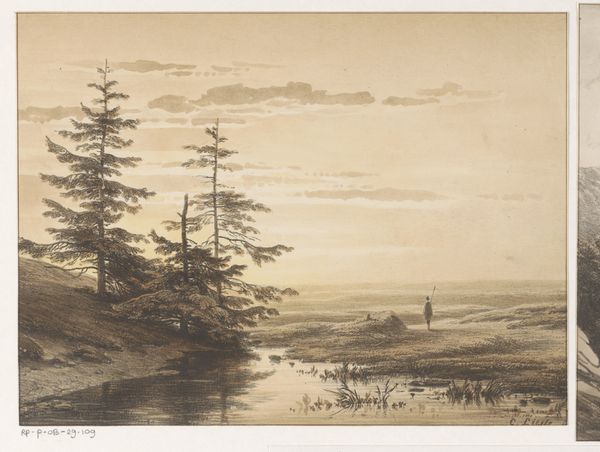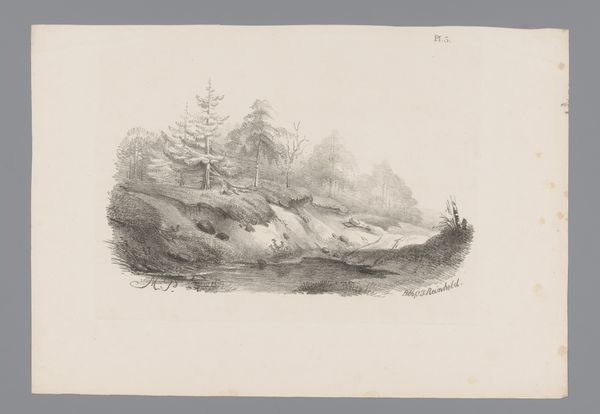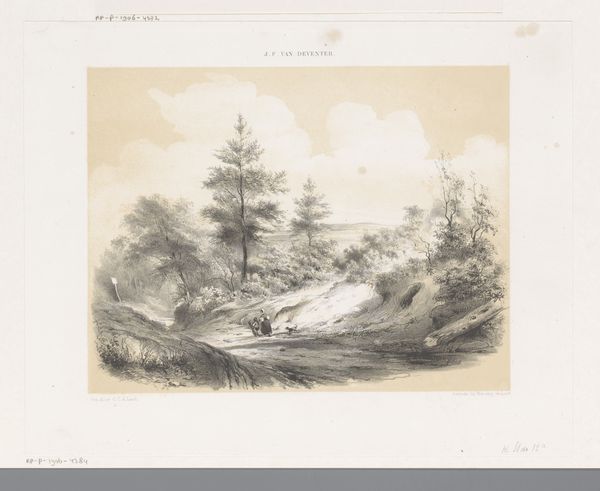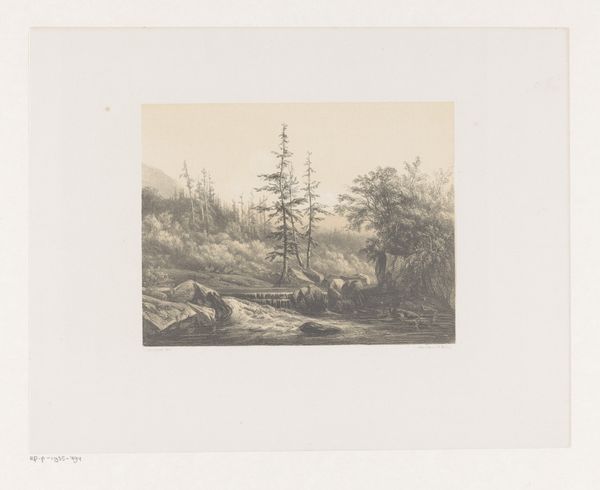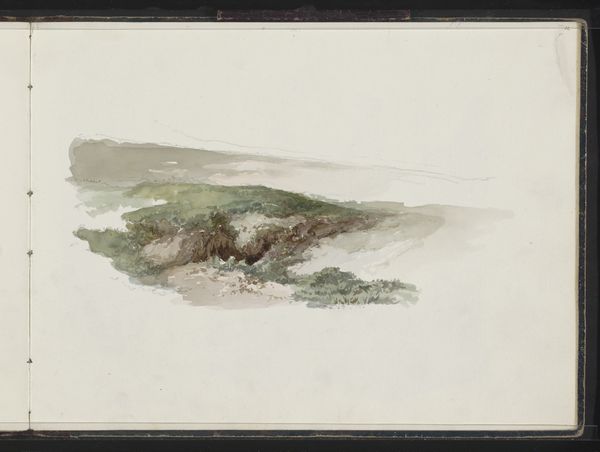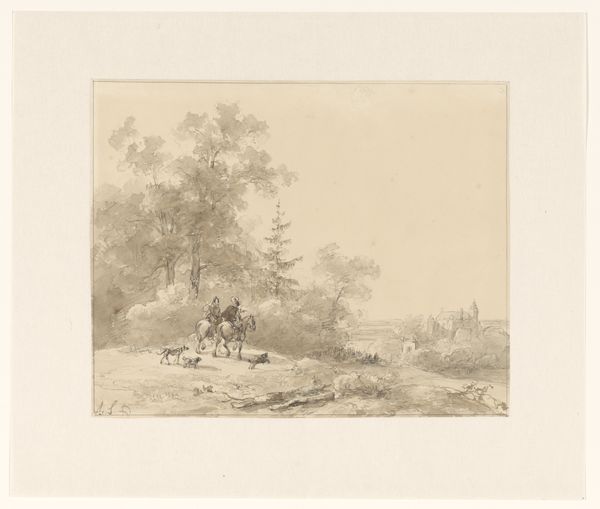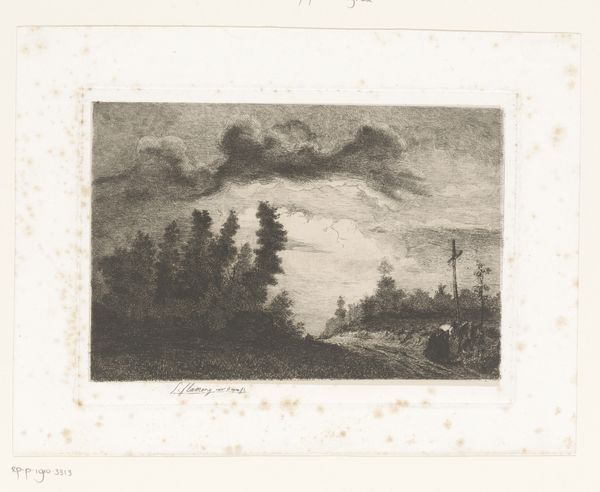
Dimensions: height 235 mm, width 305 mm
Copyright: Rijks Museum: Open Domain
Editor: This is "Landscape with Sunset," an etching by Cornelis Lieste, dating sometime between 1847 and 1883. It has such a melancholic mood. What symbols jump out to you in this work? Curator: Immediately, the setting sun speaks of endings, of mortality. Consider the solitary figure, staff in hand; are they a wanderer, a pilgrim even? And the trees, so prominently placed—upward striving, yet rooted to the earth. Does that dichotomy ring a bell? Editor: It does! The Romantics loved that tension, the sublime but also the earthly. Curator: Exactly. Think of how landscape evolved as a symbol. It's not just pretty scenery, it is the realm of the soul, of reflection, memory, of national identity, if you follow the arc of romanticism... Lieste sets us within this established vocabulary and gives us something familiar yet unique, like an aged photograph, resonating with a faint longing, *sehnsucht*. Editor: The water, mirroring the sky, also adds a layer. Are you suggesting a spiritual component? Curator: The reflective surface speaks of duality, the visible and the unseen. It asks us: what lies beneath? What version of ourselves are we projecting? Also, consider the historical context. Can you sense a continuity between 17th-century Dutch landscapes and this etching? Editor: Now that you mention it, yes, that sense of vastness but with intimate details in the foreground. Thank you! I now perceive the piece’s visual language beyond its simple composition. Curator: Indeed, we read symbols, not merely see them. Always remember, art whispers cultural secrets!
Comments
No comments
Be the first to comment and join the conversation on the ultimate creative platform.
